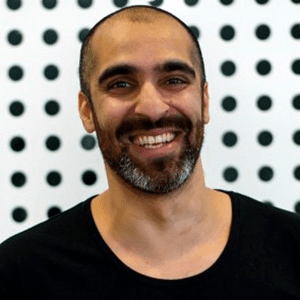

#33: How to manage difficult conversations
Difficult conversations can be a lot easier if we change our way of thinking in advance. In this podcast, the late Deborah Burt shares her recipe.
Start with accepting that there are 3 versions to every story and that they co-exist; check your feelings and assumptions – ask questions and finally, agreement doesn’t mean a solution, it’s an agreement to move forward towards a solution.
Stephanie: Hello, and welcome to TEC Live. Stephanie Christopher here, Chief Executive of The Executive Connection. TEC connects CEOs, executives and business owners to the world’s largest business leader network.
Today our guest on TEC Live is Deborah Burt. Deborah is a highly experienced human resources executive, she’s held HR director roles with global organisations in the financial services, IT and professional services sectors. It was really some time ago actually, because then she was CEO of a software startup if I remember correctly. Has run her own HR consulting business for some years as well.
So Deborah works as a coach, a mediator and a facilitator, which I think Deb is a little soft on who you really are. Deb is an outstanding leader. Deb would be the best course designer I’ve ever seen in deciding what is the problem that an organisation is working on. And how’s the best way we can really affect change in the people there rather than training, which we’ve been just talking to Gaj Ravichandra isn’t the way to go. And as far as a facilitator goes, Deborah Burt taught me everything I know.
So here we’re going to talk about difficult conversations and Deborah Burt, welcome to TEC Live.
Deborah: Thank you, Stephanie
Stephanie: Why is it so hard to have a difficult conversation?
Deborah: Well, I think the answer is partly in what you just used as the adjective in front of the word conversation.
Stephanie: Yeah, okay.
Deborah: We have it in our heads that a conversation is going to be difficult. And then once you’ve decided, Oh, it’s going to be a really hard, difficult conversation, what am I going to say? How am I going to feel? How are they going to react when I start this conversation? And so of course you set yourself up. You’ve told yourself that it’s going to be difficult already. So we confirm our own expectations often, don’t we?
Stephanie: So where is that coming from? And so I think I should pre-empt this by saying this feels less like a podcast I think coming up than a personal coaching session for me, because we’ve talked about this topic before, but where does it come from? Why do we feel that it’s going to be hard? Why do we set ourselves up for that?
Deborah: I think the first answer is experience. Have you ever had a difficult conversation?
Stephanie: Yes.
Deborah: Yes. And why was it difficult? Because it felt difficult.
Stephanie: Yeah.
Deborah: Yeah. So we’re not kidding ourselves. Conversations can be very, very difficult, but they can be a lot easier if we change the way we think about it in advance and even… Because in my mind, there’s two types of difficult conversations. If you start at the very top of the line, there’s the difficult conversations that we know we have to have. So we’re planning in advance, we’re thinking about it. We know who we have to talk to, the topic we have to talk about, we’re worried about how it’s going to land and the consequences, and will the relationship be damaged and all of those things. And then there’s the difficult conversation which just turns up at our doorstep and we didn’t know what was going to happen.
In fact, you come and visit me and you say, I want to talk to you about X. And I go, I never saw this coming. This is me talking to myself in my head. I never saw this coming. Oh my gosh, what’s she going to say? Oh, I’m really worried about it. So that’s on the receiving end, and I need to know how I’m going to deal with those types of conversations because you’ve planned maybe what you’re going to say. That’s why you’ve turned up on my doorstep and I didn’t see it coming. And now I’ve got to have a strategy for dealing with what is in my mind, very suddenly in nanoseconds I decided, Oh my gosh, this is going to be a different conversation. I didn’t see it coming.
Stephanie: And I’m not prepared.
Deborah: And I’m not prepared at all. So can we take a rain check on that difficult conversation please? Because I need to go away and do some thinking.
Stephanie: Yeah, right. Okay.
Deborah: And we can’t do that.
Stephanie: Well, we can’t. So let’s start with the first type, which is, there’s something I have to talk about.
Deborah: Yep.
Stephanie: So tell me about those.
Deborah: Let’s try and put it into the context of a business situation. So you’ve decided you need to talk to an employee for whatever reason, maybe it’s about their performance and maybe you’ve been observing some of the things that they’ve been doing. And so you’ve decided I need to give them some feedback and I need to tell them that they need to change their performance or there’ll be some consequences. And most people don’t like having those conversations, it makes them feel uncomfortable. You’re thinking about what I need to say. That’s where we typically focus on what have you been doing and what do I need to tell you about it and what it means to me and the organisation? It’s the what, what, what, what conversation.
Stephanie: Yeah.
Deborah: There’s some other things though that you should be thinking about, which most people don’t. So you think a lot about the what, but you possibly don’t think about how you were feeling. You need to be thinking about-
Stephanie: How me as the person who’s the issue.
Deborah: You as the person is raising the issue. How do I feel about this? Do I feel nervous? Do I feel anxious? Do I feel sad? Do I feel disappointed? Do I feel frustrated? Do I feel angry? There’s all those different emotions and you could have many of those, not just one. You could have a whole variety and it’s layered and it’s complex and it has changed over time. So you’ve got to actually understand that, that’s how you are feeling because even if you are in denial about your feelings, it’s not going to be a difficult conversation without feelings, is it?
Stephanie: Yeah.
Deborah: If you were just a robot giving these black and white views about what you’d seen and what you’d experienced without feelings.
Stephanie: You’ll miss all the cues anyway.
Deborah: Yeah.
Stephanie: And they’ll see the feelings on your face.
Deborah: They will. And so if you can’t also add into this difficult conversation and plan in advance, how you will deal with your feelings and their feelings, then that’s a missed opportunity for you and probably for the person on the receiving end.
Stephanie: So give me an example of how that works then.
Deborah: You mean in terms of-
Stephanie: The feelings of bringing that into it.
Deborah: Okay, well, a simple one. So you and I have been to a meeting and you saw me behave in a way that you feel you need to talk to me about. So after the meeting’s over, you’re thinking about how do I address this at Deborah? I need to explain to her that I felt uncomfortable. So you’re owning your own feelings. You’re not saying Deborah, you made me uncomfortable. I say, I felt uncomfortable when I saw you interrupt on a number of occasions your colleagues and I interpreted frustration on their face. So I’m concerned about the level of interruption that occurred during that meeting, and I’m wondering what’s going on for you? Now, you could have all sorts of assumptions about what was going on for me. And there’s nothing to guarantee that your assumptions are correct. This is another really important ingredient about if you’d know a conversation in advance or feels like it’s going to be difficult.
One of the things that you need to do is yes, make the assumptions. We can’t avoid making assumptions about what someone did and what were their intentions, but you then need to ask me, so Deborah, I saw you interrupt a number of times, what was going on in your head that caused you to interrupt?
That’s the best way to do it. And what most people do is just say, Deborah, you made me uncomfortable. And I could see that you were really excited and you wanted to put your point of view. Well, that may or may not be true. You don’t know because intentions are invisible. Unless you ask me what my intentions are, you’re just guessing. My intention could be something completely different.
Stephanie: So I’ve learned from you, being reminded by you this year in some work that you’ve been doing with my team, on the difference between observation and interpretation. That you can, and you need to observe a behaviour, observe an expression, but be very careful not to interpret it.
Deborah: Correct.
Stephanie: She’s mad, she’s angry or she’s cranky today or whatever, observe it and then test that.
Deborah: And then a simple example would be, we all see people speeding on the road and sometimes it looks dangerous and sometimes it gets in our way of safe driving. Now, all we think about is what an idiot, they’re driving badly, they’re driving unsafely. Now, if you had the opportunity and we don’t to find out why are you driving so unsafely? We could stop and ask that driver if the answer was, Oh, I didn’t realise I was. And thanks for the feedback. That’s one piece of information that’s interesting. If it was odd, I care about other people and you’re going too slow and you’re thinking, well, that’s interesting. But if the answer was well, I’ve got someone bleeding out on the backseat and I’m rushing them to the emergency department. We feel different.
Stephanie: How can I help?
Deborah: Yeah. We feel differently once we understand the reason behind the behaviour. So note the behaviour, own the fact that in your head, you have started forming assumptions. To stay in completely neutral is superhuman effort. But the more you train yourself to do that, it is interesting the number of times that you can catch yourself making an assumption, and you can say, hang on a minute. I need to check this out because what I have learnt by checking people’s reasons for behaving the way they do in the past, I’ve learned sometimes how wrong I’ve been. My interpretation has just been so wrong. And when you start doing that, then you get better at staying more neutral about what you’re observing. I want to go back to the earlier part of the conversation we’ve been having about why our conversation is difficult. And we’re talking about what happened and how it happened and the facts and figures, if you like. We started this conversation about feelings, but there’s another piece which I find really interesting, which is identity.
And a lot of people don’t talk about things because they’re worried about what it means to me, in my sense of my identity as a competent person, if I have this difficult conversation or a good person, or even a likable person.
Stephanie: Yeah, right. They won’t like me.
Deborah: Yeah. Let’s say I worked for you, and I wanted to ask you for a pay rise. And the reason why I find this such a difficult thing in my head to come and talk to you about it is because if you start telling me all the reasons why I can’t have a pay rise, then you’re basically telling me I’m not competent. And I decide, I don’t want to take that risk, so I’m not going to ask you for a pay rise. So it wasn’t even about the mechanics of asking for a pay rise and bringing in the market data and whatever else, my facts and figures. It was just simply my fear of…
Stephanie: What you’re going to say back.
Deborah: Yeah. And there’s just so many times I can remember somebody came up to me during a break, I was running a workshop where this was the topic of how to have a difficult conversation. And I talked about this thing about identity, that sometimes what gets in the way, not even whether we choose to have that conversation or not, but we might be in the middle of a conversation. And all of a sudden what people are saying back to us, disrupts us in terms of our sense of who we are as a human being. And this woman came up to me during the break, and she said, I suddenly realised what every time I talked to my adult daughter about her career choices, that we just get to a certain point in the conversation in my head, it just starts to get really difficult and uncomfortable. And I realise, because I start to think about was I good enough mother? And that’s the blockage I’m having about having a proper conversation with my daughter. It’s all about myself and my own self image as a mother. Well, I thought, wow, that’s-
Stephanie: That’s good insight. So that identity thing, if there’s two people having the conversation, there’s two identities talking to each other as well. Because even if you’ve got all of this mapped out and practiced, even role-played, but practiced you’re landing on someone else’s identity. So the first thing you say might hit them straight with, I’m not good enough. I’m not good enough.
Deborah: Yeah. Yep.
Stephanie: I knew she didn’t like me or whatever.
Deborah: Yep. You’re a failure. You’re not good enough for this job. You’re actually not a very likable person, whatever.
Stephanie: So then some of us are right to avoid these difficult conversations. So where do you start then Deb? There’s facts and figures, there’s obviously something that’s triggering it or a message you have to convey. There’s, here’s how I feel about it. This is what it’s doing to me. Here’s my identity and some assumptions right or wrong about yours. So how do you pull all that together to plan?
Deborah: I think the gold standard of how you end up having a halfway decent difficult conversation is that you realise that there’s no one truth, no matter how much you might want to believe that you are right, a 100% right, and the other party is a 100% wrong. You need to have a… I guess a little bit of a willingness to accept that… Just like in an accident, there’s 10 witnesses and there’s 10 different stories about what actually happened in that accident. So you need to be willing to discover their version of the truth. You go into this difficult conversation with your truth, your story. This is my version of what happened. This is my version of how it happened, why it happened, the consequences for what happened. That’s my story. But there is another story you just have to be willing to accept, there is another story and it’s important for me to find out what that other story is.
There’s two stories, but there’s actually a third story. The third story is pretend there was a third party in the room, listening to your story and the other person’s story and what that third person is going to see. They’re a neutral objective observer. And what they’re going to hear and see are some things, which neither of you are a 100% correct. Right. It’s not all on one side. So this third story is, if you were say the mediator, the mediator would be able to tell the story in a way, which is not your story, not the other person’s story. It’s just some blend of both of them and just being aware that, that’s the reality of how these things are, will help you deal with whatever’s coming your way, no matter what the feelings are and the reactions and the strange facts that get thrown back at you and the strange interpretations of those facts that come back at you, you can go, okay, that’s their story.
And it’s okay for them to have their story. They’re not going to agree with my story. And I can’t agree with their story. There are just these various little stories. So that’s the first thing, just to accept that. The second thing is to go… And I have all these feelings about these facts and figures and interpretations and consequences and all that. So I’ve got to be willing to be more aware of them, be more conscious of them and to deal with them and maybe to share them.
Stephanie: So I’m feeling uncomfortable right now about this.
Deborah: Exactly. Or I’m disappointed or I’m sad. Or I’m surprised that you’re giving me this information. I wasn’t aware that this was how you were feeling sort of thing. It’s fascinating because most people are so worried about the feelings part of a difficult conversation, they want to avoid it. And what makes a conversation difficult, our feelings. So if you don’t deal with the feelings, you can’t resolve whatever’s the thing that’s making it difficult. If you’re not addressing the feelings. If you’re not having a conversation about the feelings, you can’t deal with the difficult thing.
Stephanie: So what about if the person that you’re talking to burst into tears? You’re thinking about anger, you’re planning it and you think here are the facts. This is the impact it has on me. We need to discuss it. Boy, they’re going to really arc up and I bet they’re going to fight me, and they just burst into tears. So it’s unexpected. Why is that so hard for people to do it?
Deborah: Sorry for laughing. I guess again, it gets back to the story you’ve told yourself about the appropriateness of people crying in front of you or not, or what to do with it, whether you should talk about it or not, it’s just… We have so many stories we’ve told each other, and we have experiences and we’ve made decisions about what to do with things. It’s like we had a recipe and maybe it works maybe it doesn’t. But if you find that your history of dealing with people in front of you who are crying, hasn’t been so successful and try new recipes so that I would just simply say, just name it. Number one, don’t pretend it’s not happening. Just name it. I can see that what we’re talking about has made you cry and then you can ask a question. Are you okay? Do you want to keep talking?
Do you want to take a break? Or you can say, if you feel that it’s okay for you to keep talking, so where’s that coming from? Because you want to find out more information, the more information that you can get from the other person, the more successful you will both be in having this difficult conversation, move forward into something that might be a resolution, or at least a more productive way forward than it otherwise would be. The thing about most difficult conversations on both sides is that you walk away with not very much information to help you move forward. You think about the two circles, your thought bubble, their thought bubble and the overlap between the two.
Stephanie: Yeah.
Deborah: You want to absolutely maximise the sharing of information between the two of you. You want to understand where they’re coming from. You want them to understand where you’re coming from. Understanding does not equal agreement. And people sometimes are worried about trying to understand something better and acknowledging their understanding of the other party. Because I think if I showed I understand that person, maybe they’ll interpret it as I’m now agreeing with their position.
Stephanie: And then they’ll come around.
Deborah: Yeah. You don’t have to agree with someone and it’s… People find it incredibly difficult to move forward. If they also at the same time, see, believe that person doesn’t understand me. Even a simple thing like when we talk to another human being and we’ve just tried to explain something in our minds, that’s very simple. And they don’t get it, or that doesn’t make any sense. What do we tend to do?
Stephanie: Say it again a bit louder. And then again, even louder.
Deborah: And typically does that work?
Stephanie: Never. I’ll just let you know never.
Deborah: Yeah. But then the reverse, when the person goes, Oh, great. I can… They don’t use these words, but clearly they’re demonstrating in some way, either through the expression on their face or some words of some kind, but okay. I can see that you’ve understood my side of the story. How does that feel?
Stephanie: Incredible.
Deborah: Yeah. And it doesn’t mean you agree with my side of the story, but it just means now that we share the same facts and feelings, now we can start to problem solve together. And that’s the last step.
Stephanie: And that’s the trap, isn’t it? As you just said, great, now we’re resolved because we understand each other. So then what’s the last step? How do we move towards resolution?
Deborah: You have to… Both of you see it as a problem solving exercise. There’s no magic pills. We’ve shared our different versions of reality, our different versions of the truth. And we realised that two conflicting versions of the truth exists. They co-exist doesn’t mean one’s a 100% right or wrong. It just means we have different truths. We both have some feelings about that, and we’ve shared those feelings and we’re being open and honest, and we want to now try and move forward. Presumably, most of people, if they’ve engaged in this conversation like, so how do we move forward? So I know you’re a mother, I’m a mother and we have conversations with our grown-up children. Pick something simple, like smoking, your grown-up, let’s say it’s a daughter who smokes and you want to talk to the daughter about… And you have spoken very often about the fact that they smoke and you’ve told them it’s a health hazard.
And why are you doing it? It’s a sort of like… And they’re just so annoyed with the fact that you constantly keep on harping about this smoking thing. And is it about the smoking thing? It’s because you both acknowledged that the science says smoking is bad for you. So what’s it really about? And most people in those conversations can’t get past the fact that I’m right smoking is bad for you and your wrong, because-
Stephanie: You’re telling me what to do.
Deborah: Yeah. So it’s like, well, what’s underneath all that? So what’s underneath that potentially is you’re concerned about your daughter, your sadness, your fear about the future for her. And on her part, you don’t know yet until you ask, do you? So I know, you know smoking is bad, what’s going on? Tell me what’s going on. And she might be willing to say, well, I’m tired of being seen as the good girl. And you know what, mum, you are so controlling. You can’t control me in this space. I’m the one that gets to decide whether I smoke or not. And do you know what? I even like it. So I know it’s bad for me, but I like it. And so now you start to talk about some very different things which have so many different angles that you need to-
Stephanie: Rather than the black and white, I think there’s, I don’t. What about the example you gave at the beginning of if you’re blindsided?
Deborah: Yes.
Stephanie: So either you think a conversation is about X and pow in come something you really don’t expect, or someone walks into your office, put it in work context and you’re completely blindsided.
Deborah: Yep.
Stephanie: How do you deal with that?
Deborah: The one tool you’ve got is to ask questions. I need to understand more about what you’re saying. Why are you saying it? Where’s it coming from? What’s the history? Tell me more about what my behaviours meaning to you. It’s just ask, ask, ask, ask, paraphrase, summarise, get, demonstrate that you’re listening, demonstrate that you’re understanding, demonstrating that you’re being empathetic.
Stephanie: And would you share how you’re feeling at that stage? Because you might just freeze or your heart’s racing or whatever, if you’re feeling under attack, would you say something like that? Or would you just… At that point, you think, just keep on asking while you compose yourself.
Deborah: I think probably some of questioning opening up the dialogue would help you get your act together because when you are feeling in a sense attacked, you’re feeling emotional. You’re not feeling logical. So one of the easiest tools when you are feeling in an emotional state is to start talking out loud. And before you react to this thing, that’s caused you to be whatever emotional state you’re in, angry or hurt or sad or whatever, you want just a few minutes, even less, just to start to think about what am I really feeling and how am I going to deal with this? And so while you were asking questions and listening to the answers, you are in parallel, which we shouldn’t do, but we do processing how you are feeling and that the point you’ll maybe feel comfortable and maybe more accurate about what you really are feeling because what first comes out of your mouth may not actually be-
Stephanie: Fight or flight kind of-
Deborah: Yeah. Yeah. And so once you’ve had time to just do a little bit of processing then your reflection back to that person might be more accurate representation of what’s inside your head, what’s inside your stomach. And that means that you’re in a better place then to have a conversation. Because if they then hear something that you realise 10 minutes later, actually they’re responding to me in a way they’ve assumed I’m sad when in fact I’m angry or the reverse, because I told them that to start with. And in fact, now that I’ve got time to think about it, it’s actually something different.
Stephanie: I think that’s a really clever tactic for a few things. I like that idea of getting yourself in control. You kind of thinking about it and then there’s something else you could do. You could get the pause without saying, can we talk about this another time? Which never works. But you could say, I’ve heard this, I’ve heard this, I’ve heard this. Okay. Let me just think about that for a sec. Then you can pause, get your breath.
Deborah: Yep.
Stephanie: Quick, quick, quick. And then you can get into it.
Deborah: Yep.
Stephanie: It’s very clever. And apart from anything else, thinking back to Mike Logan, are you curious enough to ask the questions? And he was saying about a problem fully identified is nearly solved anyway. So between the two of you, you really interrogating this thing and going deep and understanding it, at the end it might be so much easier to come to a resolution.
Deborah: Exactly.
Stephanie: So I know you love a recipe Deb. Figuratively, and literally, is there a recipe for a difficult conversation?
Deborah: Yes. In one sense. So the easiest recipe is be curious and seek more information, reach understanding, but the other bit more complicated recipe is to know your story, your version of the truth. I appreciate that there is at least one other story and you need to learn what it is. So that’s step one. There are two stories here. I need to share mine. But first of all, I need to understand the other person’s story. The second thing is the feeling side, don’t be frightened to feelings. This is why it is a difficult conversation, acknowledge your own, find out what theirs are and deal with the feelings, be honest about them. And then once you’re at that place where you know the two versions of the truth, you know the feelings on both sides, the third step you’re now in problem solving mode. So I think they’re the three steps.
Stephanie: It sounds pretty straightforward. And I think the big thing I’ve taken away from today is spend some time understanding the feelings. So acknowledge yours upfront and for all of us, that takes a bit of preparation too, in the same way, you might be confused by someone else and think they look angry. When in fact they’re sad, you might think you’re angry, but you might be tired or something, figure out your own feelings, understand theirs. And then the other big bit that was great was there’s three versions of the truth. I really like that. And that’s the kind of agreeing to pause and even let’s just look at that third version. I think that’s very, very powerful. So the idea of preparation, feelings, both versions of the truth.
Think about that third one that the objective supposed outsider would have and then start to get to resolution makes a real difference. And I think enables us all to perhaps go into some of the conversations we need to be having with a little more power, actually in certainly more tools in our armory. Deborah, Burt, thank you so much for your time.
Deborah: You’re welcome.
Stephanie: So that’s TEC Live for today. CEOs are in the business of making decisions and leadership is the art of execution. I’m Stephanie Christopher, and look forward to talking to you next time.



